
The Money Smart for Young Adults (MSYA) instructor-led curriculum provides participants with practical knowledge, skills-building opportunities, and resources they can use to manage their finances with confidence. Instructors can use it to deliver unbiased, relevant, and accurate financial education whether they are new or experienced trainers.
This version of MSYA include these updates:
- Target age range for this version is now 16-24 year olds (changed from ages 12-20 year olds)
- Uses Consumer Financial Protection Bureau (CFPB) curriculum review tool to update the content (consumerfinance.gov)
- A pre- and post-knowledge assessments
- Improved look and feel of the curricula and format
- Includes more interactive exercises
The MSYA curriculum consists of 12 modules that cover basic financial topics. Each module guides instructors on what to say and do. The materials are available for immediate download below, and Money Smart – Teach – For Young Adults (catalog.fdic.gov).
If you are still using the prior version of Money Smart for Young Adults and need assistance, please contact us at ConsumerEducation@fdic.gov.
What's inside Money Smart for Young Adults?
You will find that Money Smart for Young Adults has:
- Information that’s updated, relevant, and informed by research. For example, the curriculum features information and scenarios relevant to young adults.
- Segments that offer you options to make training relevant. The curriculum is divided into 12 modules, each on an important financial topic, that are subdivided into sections. Instructors can present the modules in any order or combination depending upon an audience’s interests and knowledge.
- An emphasis on real-life skills and choices. Money Smart for Young Adults provides participants with practical knowledge and resources they can use to manage their finances.
- Realistic scenarios. Short scenarios featuring consumers in a variety of financial situations provide opportunities to practice using financial knowledge and skills with confidence.
- An expanded array of practical tools and resources. “Try It” activities give participants opportunities to practice what they learned in a variety of contexts. “Apply It” activities help participants apply what they have learned to their own lives, either during or after the training.
- Key takeaways. A key takeaway sums up the most important message from each section.
- A structure that makes it easy to select relevant materials. The curriculum has 12 modules, each on an important financial topic. The modules are subdivided into sections. Instructors can present the modules, and sections within modules, in any order or combination depending upon an audience’s interests and knowledge. The Guide to Presenting Money Smart for Young Adults includes roadmaps to help select relevant topics.
Tools to help you plan your training
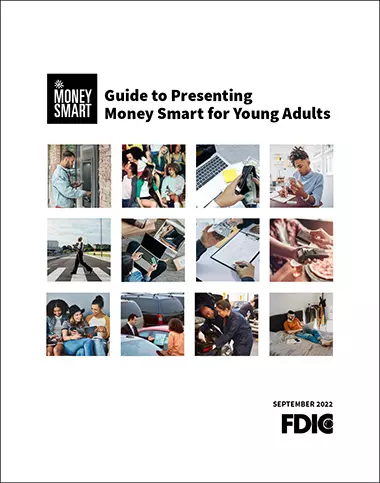
Start by reviewing the Guide to Presenting Money Smart for Young Adults (catalog.fdic.gov). It includes practical tips for planning, marketing, and delivering training. It also includes information to make training accessible and welcoming for everyone, including people with disabilities.
Each of the 12 Money Smart for Young Adults modules includes:
- Instructor Guides that include what you need to prepare and deliver Money Smart training, including easy to follow cues, script, and interactive exercises.
- PowerPoint Slides that can help you present training content in an engaging manner.
- Participant Guides with tools and information that participants can use during your training and afterwards.
The curriculum also includes an Instructor Supplement: Real-Life Money Situations for Young Adults (catalog.fdic.gov), which provides five scenarios featuring young adults thinking about financial decisions.
The 12 Money Smart for Young Adults Training Modules
The files are listed below and are available in the FDIC Catalog (catalog.fdic.gov).
Click arrows next to headers to sort in Ascending or Descending order.
| Module | Estimated Time | Focus | Docs/ Videos |
|---|---|---|---|
| Module 1: Bank On It | 4 hours | How your needs determine which financial products, services, and providers you select | Module 1: Instructor Guide Module 1: Participant Guide Module 1: PowerPoint Slides |
| Module 2: Setting Goals and Making Financial Decisions | 2 hours | Defining and setting financial goals | Module 2: Instructor Guide Module 2: Participant Guide Module 2: PowerPoint Slides |
| Module 3: Making the Most of Your Income | 2 hours | Types of income, different ways to receive income, how to read a pay statement, and how to track income | Module 3: Instructor Guide Module 3: Participant Guide Module 3: PowerPoint Slides |
| Module 4: Your Spending and Saving Plan | 1 hour | How to create a spending and saving plan, and ways to increase income and decrease expenses | Module 4: Instructor Guide Module 4: Participant Guide Module 4: PowerPoint Slides |
| Module 5: Saving for Your Goals and Your Future | 2 hours 30 minutes | What it means to save, reasons saving money is important, and ways to find money to save | Module 5: Instructor Guide Module 5: Participant Guide Module 5: PowerPoint Slides |
| Module 6: Building Your Credit History | 3 hours 30 minutes | Credit reports and how they can affect many areas of your life | Module 6: Instructor Guide Module 6: Participant Guide Module 6: PowerPoint Slides |
| Module 7: Borrowing Basics | 1 hour 30 minutes | Different types of loans and the costs of borrowing | Module 7: Instructor Guide Module 7: Participant Guide Module 7: PowerPoint Slides |
| Module 8: Charge It Right | 2 hours | How credit cards work and important credit card terms | Module 8: Instructor Guide Module 8: Participant Guide Module 8: PowerPoint Slides |
| Module 9: Protecting Your Money and Your Identity | 2 hours | How to identify risks to your assets and ways you can reduce those risks | Module 9: Instructor Guide Module 9: Participant Guide Module 9: PowerPoint Slides |
| Module 10: Buying a Car | 1 hour 30 minutes | One-time and ongoing costs of car ownership and how to compare options when buying a car | Module 10: Instructor Guide Module 10: Participant Guide Module 10: PowerPoint Slides |
| Module 11: Paying for Education and Training | 2 hours | Benefits and costs of post-high school education and training and different types of education and training | Module 11: Instructor Guide Module 11: Participant Guide Module 11: PowerPoint Slides |
| Module 12: Living on Your Own | 2 hours | How to figure out what you need and want in a place to live and options for housing | Module 12: Instructor Guide Module 12: Participant Guide Module 12: PowerPoint Slides |
The Federal Deposit Insurance Corporation is prohibited from endorsing any specific organizations. Money Smart users must ensure that their publicity, advertisements, and public statements do not use the FDIC name or logo to imply that FDIC endorses their organization or its products or services.
Additional Links

Money Smart Alliance
Learn, collaborate and grow with FDIC’s recognized organizations that use Money Smart.
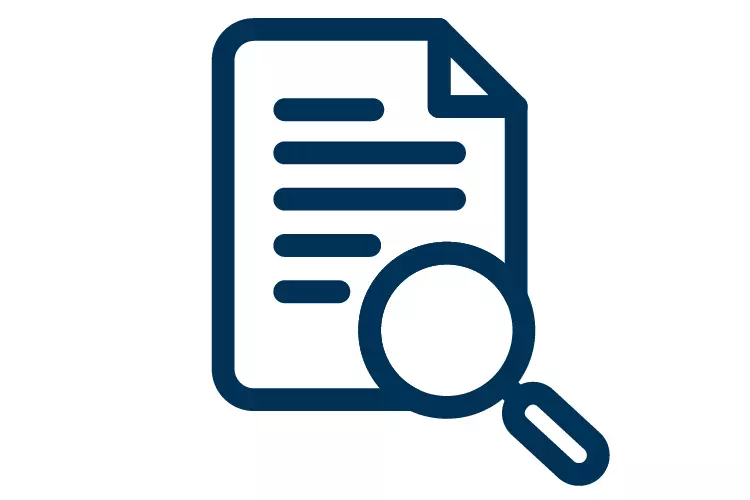
Money Smart News
FDIC’s newsletter featuring tips, updates and success stories for financial educators.
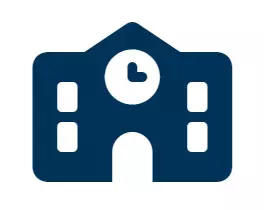
Money Smart News for Kids
Follow Isabella and Noah as they learn about basic banking terms and financial concepts.

Teacher Online Resource Center
Here you will find tools to help you teach financial education including lesson plans, videos, and other resources.
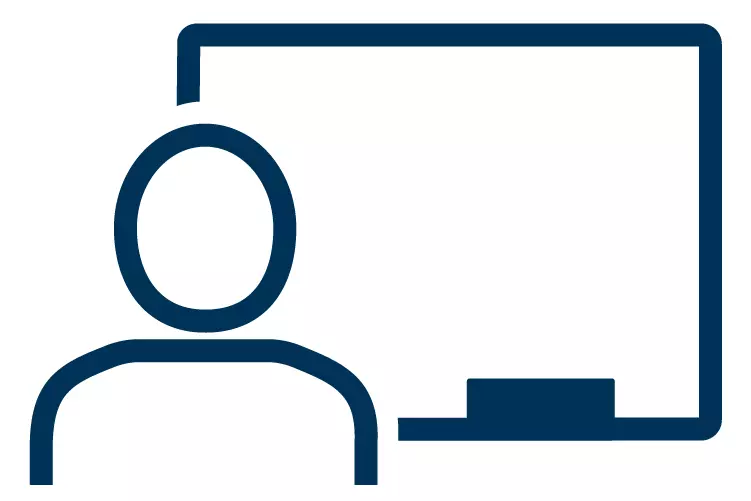
Train-the-Trainer Program
Provides guidance with videos, workshops, and webinars.
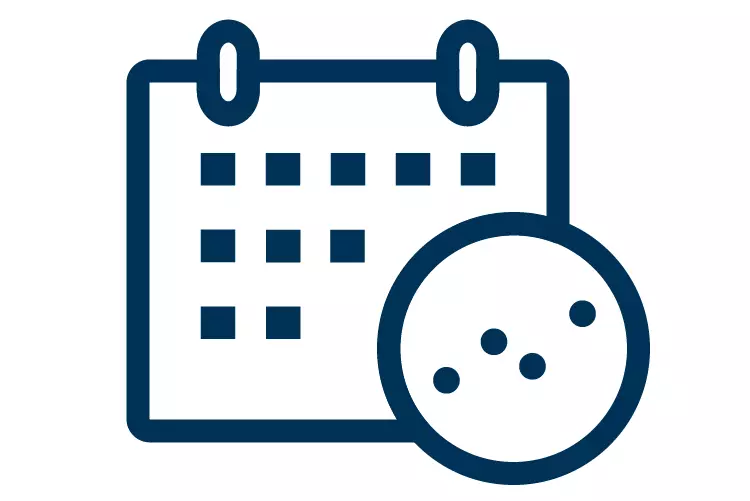
Training & Events
Announcements of upcoming Money Smart events for Train-the-Trainer and Small Business events.
